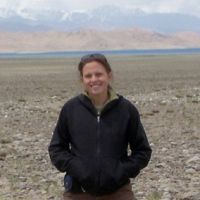Riebe et al., 2013
Bedrock composition limits mountain ecosystem productivity and landscape evolution
Riebe, C.S. W.J. Hahm; and C. Lukens (2013)
American Geophysical Union, Fall Meeting 2013, abstract #B13L-02
-
Sierra, INVESTIGATOR
-
Eel, INVESTIGATOR, COLLABORATOR
-
Sierra, GRAD STUDENT
Abstract
We used measurements of bedrock geochemistry, forest productivity and cosmogenic nuclides to explore connections among lithology, ecosystem productivity and landscape evolution across a lithosequence of 21 sites in the Sierra Nevada Batholith, California. Our sites span a narrow range in elevations and thus share similar climatic conditions. Meanwhile, underlying bedrock varies from granite to diorite and spans nearly the entire range of geochemical compositions observed in Cordilleran granitoids. Land cover varies markedly, from groves of Giant Sequoia, the largest trees on Earth, to pluton-spanning swaths of little or no soil and vegetative cover. This is closely reflected in measures of forest productivity, such as remotely sensed tree-canopy cover, which varies by more than an order of magnitude across our sites and often changes abruptly at mapped contacts between rock types. We find that tree-canopy cover is closely correlated with the concentrations in bedrock of major and minor elements, including several plant-essential nutrients. For example, tree-canopy cover is virtually zero where there is less than 0.3 mg/g phosphorus in bedrock. Erosion rates from these nearly vegetation-free, nutrient deserts are more than 2.5 times slower on average than they are from surrounding, relatively nutrient-rich, soil-mantled bedrock. Thus by influencing soil and forest cover, bedrock nutrient concentrations may provoke weathering-limited erosion and thus may strongly regulate landscape evolution. Our analysis suggests that variations in bedrock nutrient concentrations can also provoke an intrinsic limitation on primary productivity. These limitations appear to apply across all our sites. To the extent that they are broadly representative of conditions in granitic landscapes elsewhere around the world, our results are consistent with widespread, but previously undocumented lithologic control of the distribution and diversity of vegetation in mountainous terrain.
Citation
Riebe, C.S. W.J. Hahm; and C. Lukens (2013): Bedrock composition limits mountain ecosystem productivity and landscape evolution. American Geophysical Union, Fall Meeting 2013, abstract #B13L-02.
 This Paper/Book acknowledges NSF CZO grant support.
This Paper/Book acknowledges NSF CZO grant support.
Explore Further



